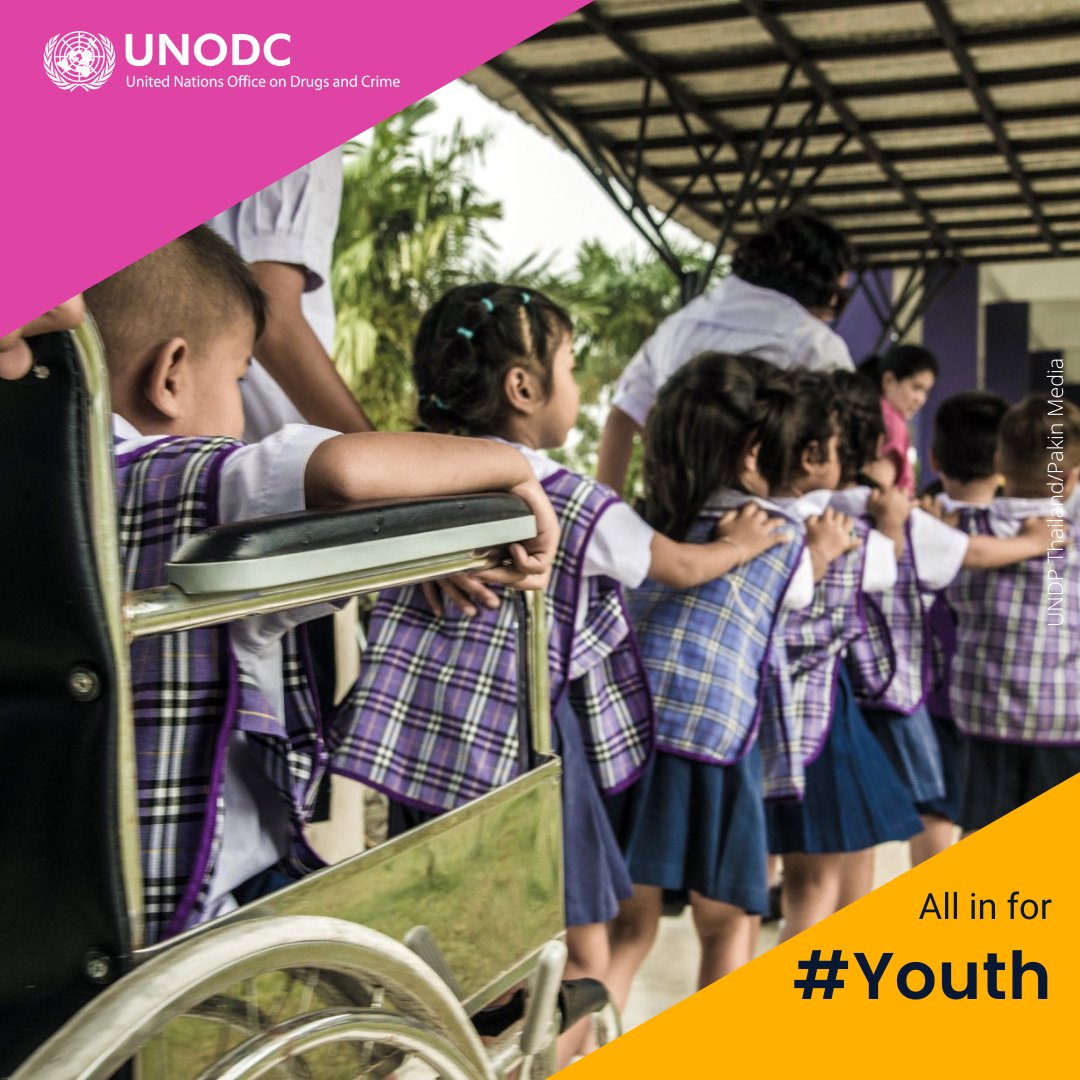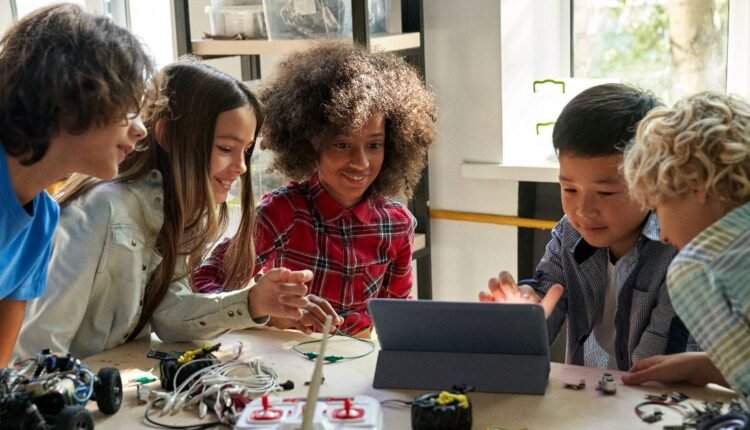Child Rights Education in Schools is vital for promoting awareness and safeguarding the rights of children. This article provides insights into the importance of incorporating child rights education within school curricula and its impact on raising knowledgeable and responsible citizens who respect and protect children’s rights.
Child Rights Education in Schools aims to empower students with knowledge about the fundamental rights and freedoms that every child should enjoy. By integrating this education into the curriculum, schools create opportunities for children to learn about their rights, develop empathy, and foster a sense of responsibility towards protecting these rights.
Such education not only equips children with the tools to protect themselves from abuse and exploitation but also promotes a culture of respect, tolerance, and inclusivity. Moreover, it empowers them to become advocates and agents of change in their communities. Through its incorporation in schools, child rights education plays a crucial role in shaping a better future for children and society at large.
Importance Of Child Rights Education
Child rights education plays a vital role in shaping the minds of young individuals and ensuring a future that is bright, just, and filled with opportunities. By imparting knowledge about child rights, schools can empower students to become responsible global citizens in various ways:
- Understanding Rights: Child rights education provides students with a comprehensive understanding of their own rights as well as the rights of others. It enables them to develop empathy and respect for diversity, fostering a culture of inclusivity and tolerance.
- Promoting Social Justice: Through child rights education, students learn about social justice issues and the importance of equality. They become aware of discrimination, exploitation, and injustice, motivating them to take action and advocate for change.
- Fostering Empowerment: Child rights education empowers students by teaching them about their voices, agency, and the importance of active participation in decision-making processes. It equips them with skills to challenge social norms and contribute meaningfully to society.
- Cultivating Responsible Global Citizens: By promoting awareness and understanding of global issues, child rights education helps students develop a global perspective. They learn about human rights worldwide, inspiring them to think beyond their immediate surroundings and work towards creating a more just and compassionate world.
Key Components Of Child Rights Education
Child Rights Education in schools encompasses key components that aim to empower children with knowledge about their rights. These components include promoting inclusivity, fostering respect for diversity, providing a safe and supportive environment, and encouraging active participation in decision-making processes.
By integrating these elements into the education system, schools can effectively educate children about their rights and equip them to become engaged and responsible citizens.
| Key Components of Child Rights Education |
| Understanding Basic Human Rights |
| Child rights education in schools plays a vital role in creating awareness and fostering a culture of respect for basic human rights among students. It serves as an essential platform for shaping young minds and ensuring their understanding of fundamental rights and principles. By familiarizing students with the concept of human rights, schools enable them to recognize their rights and responsibilities as individuals and members of society. The curriculum should cover various aspects of human rights, such as the right to education, healthcare, and protection from discrimination and violence. |
| Promoting Equality and Non-Discrimination |
| One of the key components of child rights education is promoting equality and non-discrimination. Schools should emphasize the importance of treating every individual with fairness and respect, irrespective of their race, gender, socioeconomic status, or abilities. By instilling these values, students develop a strong sense of empathy and acceptance, contributing to a more inclusive and harmonious society. |
| Encouraging Empathy and Respect |
| In addition, child rights education should focus on fostering empathy and respect among students. By understanding the experiences and perspectives of others, students develop a compassionate attitude towards their peers and a willingness to stand up against injustice. Encouraging empathy and respect helps in building a positive school environment and equips students with the values and skills necessary to become responsible global citizens. |
Incorporating Child Rights Education In School Curriculum
The incorporation of Child Rights Education into the school curriculum is crucial in fostering a culture of respect, understanding, and empathy among students. An effective way to integrate this education is through various subjects, ensuring that it is not limited to a single discipline. By infusing Child Rights Education into subjects like Social Studies, English, and Science, students can learn about the importance of equal opportunities, non-discrimination, and the right to education in a holistic manner.
Age-appropriate teaching approaches play a vital role in conveying the message of Child Rights Education effectively. Teachers can use interactive activities, videos, and group discussions to engage students and promote a deep understanding of the principles and values associated with child rights. By creating a safe and inclusive classroom environment, students can actively participate in their own learning process and develop a sense of responsibility towards protecting and advocating for child rights in society.

Credit: mobile.twitter.com
Benefits Of Child Rights Education In Schools
Child rights education in schools provides various benefits for students by enhancing their social and emotional skills. By instilling knowledge about child rights, students develop a deeper understanding and empathy towards others, cultivating a sense of respect and inclusivity within the school community. This education helps in preventing bullying and discrimination, which are prevalent issues in schools.
Child rights education equips students with the necessary tools to recognize and address these issues, fostering an environment of acceptance and tolerance. Teaching children about their rights and the rights of others promotes a sense of fairness and encourages them to become advocates for equality.
Moreover, child rights education empowers students to become responsible citizens who actively participate in the community, promoting justice and equality for all. By providing a solid foundation in child rights, schools play a crucial role in shaping the values and attitudes of future generations, creating a more inclusive and harmonious society.
Strategies For Implementing Child Rights Education
Child rights education is an essential component of a comprehensive educational curriculum. To effectively implement child rights education in schools, various strategies can be adopted:
- Training and professional development for teachers – Equipping teachers with the necessary knowledge and skills to incorporate child rights education into their teaching practices is crucial. It enables them to create a supportive learning environment that respects and promotes children’s rights.
- Collaboration with NGOs and rights advocacy groups – Partnering with organizations that specialize in child rights can provide valuable resources and expertise. NGOs can offer training, workshops, and teaching materials to aid in the implementation of child rights education in schools.
By emphasizing the importance of child rights education, schools can empower students by instilling a sense of respect for themselves and others. It encourages empathy, tolerance, and active participation in creating a more just society.
Evaluating The Effectiveness Of Child Rights Education
Child rights education plays a crucial role in schools as it aims to empower students with knowledge about their rights and responsibilities. An important aspect of evaluating the effectiveness of child rights education is through assessing students’ knowledge and attitudes. This can be done through various methods, such as conducting surveys, interviews, or using pre and post-tests to measure the change in students’ understanding of child rights.
Measuring the impact of child rights education on school climate is also essential. School climate refers to the overall atmosphere and environment within the school, including relationships between students, teachers, and staff. Evaluating the impact of child rights education on school climate can be done by observing changes in behavior, attitudes, and interactions among students and staff.
By effectively evaluating the effectiveness of child rights education, schools can ensure that they are providing a comprehensive and impactful education that promotes children’s rights and a positive school climate.
Overcoming Challenges In Child Rights Education
Child rights education in schools is a vital aspect of fostering a nurturing and inclusive environment for children. However, addressing the challenges that arise in implementing such education requires a careful and sensitive approach. One key hurdle is the need to respect cultural and religious sensitivities. By acknowledging and understanding diverse beliefs and customs, schools can ensure that child rights education is inclusive and doesn’t infringe upon individual values. Additionally, involving parents and guardians in the process is essential. Collaboration with families allows for a shared understanding of the importance of child rights education and encourages active support and engagement. By establishing open channels of communication and providing opportunities for dialogue, schools can strengthen the partnership between educators and families, ultimately leading to more effective implementation of child rights education in schools.
Frequently Asked Questions For Child Rights Education In Schools
What Are Child Rights And Why Are They Important?
Child rights are the basic entitlements that every child should have, ensuring their safety, well-being, and development.
How Can Child Rights Education Benefit Schools?
Child rights education helps create a safe and inclusive school environment, fostering empathy, respect, and social responsibility among students.
What Topics Are Covered In Child Rights Education?
Child rights education covers various topics such as children’s rights and responsibilities, child protection, gender equality, and the importance of diversity and inclusion.
How Can Schools Incorporate Child Rights Education Into Their Curriculum?
Schools can incorporate child rights education by integrating it across subjects, organizing awareness campaigns, providing training for teachers, and involving students in decision-making processes.
What Role Can Parents Play In Promoting Child Rights Education In Schools?
Parents can support child rights education by actively engaging with their child’s school, encouraging discussions at home, modeling respectful behavior, and advocating for inclusive policies.
Conclusion
To summarize, Child Rights Education is an essential component of school curriculum for nurturing responsible future citizens. By instilling knowledge about the fundamental rights of children, schools play a crucial role in creating a society that respects and protects children’s well-being.
Implementing effective educational programs can foster empathy, awareness, and advocacy skills among students, thereby fostering a culture of compassion and equality. It is the collective responsibility of schools, parents, and policymakers to prioritize child rights education to ensure a brighter future for our children.
Education Act Child Rights: Ensuring A Free And Equal Education


